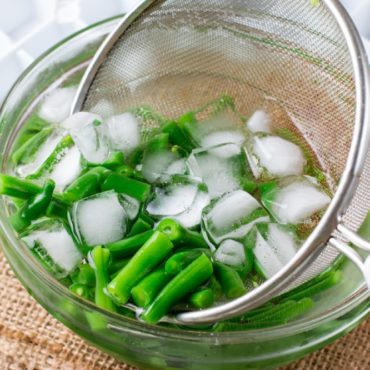Having a party? Want to know how much to buy so everyone has enough to eat and drink? And just how much is really enough?
While it would be awesome AF to tell you that there’s a fool-proof rule to use, the truth is you’re going to have to think it through every time!
Questions to Ask When Planning a Party
Planning is easier when you have the basics in place. So before you start figuring out how much food to buy, ask the following:
- What time is the party?
- How long will the party last?
- What type of food will you serve?
- What’s the breakdown of men, women, and children?
- Will the party be inside or out?
- What type of party will it be (i.e., luncheon, BBQ, cocktail party, etc.)?
- Will you have servers and a bartender or will you (and friends and family) handle that?
Why does this matter? An after-dinner social requires far less food than an afternoon barbecue. Just like a ladies tea requires less food than a party that involves a game of touch football in the backyard (but who wants to plan that anyway!)
Party Planning Tips
The amazing news is that armed with answers to the questions from the previous section, you can follow some basic guidelines to plan your menu then adjust as needed. One important note, to be safe it’s a good idea to round up your estimates rather than down.
- Let the menu fit the mood. Don’t serve sliders at a ladies luncheon unless it’s intended to be a BBQ. Duh. Give your girls what they want.
- Load up on popular items. Chips are a fan fav. So is seafood with the right crowd. Make sure you have extra so that you don’t run out.
- Don’t complicate the menu. Like most things in life, simpler is better.
- The more items you serve, the smaller the individual portion size should be.
- Including “bulk” items like bread, nuts, pretzels, etc. helps guests fill up and ensures you’ll have enough to go around. Plus they look good and can be scattered around the house and yard to encourage movement during the party.
- Vary the ingredients (i.e., don’t serve a pasta appetizer and pasta as the main dish).
- Include hot and cold foods.
- If you’re feeling bold, try using food to enhance the overall mood by mixing textures and colors to match the theme.
Estimated Serving Sizes
Consider these estimates then multiply by the number of people. Be sure to consider the age and demographic, activities they’ll be doing, and always round up. Let’s go!
Hors D’oeuvres (aka fancy a** snacks)
- 6 bites when preceding a meal.
- 4 – 6 bites per hour when hors-d’oeuvres are the meal.
- The longer your party and the larger your guest list, the greater the number of selections you should offer.
The Main Dish
- Poultry, meat or fish – 6 ounces when you have one main dish, 8 ounces when you offer two or more main courses.
- Rice, grains – 1.5 ounces as a side dish, 2 ounces in a main dish such as risotto.
- Potatoes – 5 ounces
- Vegetables – 4 ounces
- Beans – 2 ounces as a side dish
- Pasta – 2 ounces for a side dish, 3 ounces for a first course, 4 ounces for a main dish
- Green Salad – 1-ounce undressed weight
Desserts
- 1 slice cake, tart or pastry
- 4 ounces creamy desserts such as pudding or mousse
- 5 ounces ice cream
Before You Buy the Drinks
You can’t have a party without refreshments. In fact, you probably have that one friend who only comes for the drinks. So let’s talk about alcohol, soda, and cocktails.
Before you start writing your shopping list, go back to your planning questions above to help you think things through then consider the following:
- Your guests: Do they love a good keg party where the beer flows all night? Are the wine snobs? Are they foodies who love to mix up trendy cocktails?
- Your menu: What you serve should complement the meal. You can’t have pasta without vino and the 4th of July requires ice-cold beer.
- Guest ages: Having a party with young kids? Be sure to have soda and juice on hand. Recent college grads? Beer on tap might be a good idea. Entertaining an older crowd? Make sure the wine and spirits are abundant.
Beverage Guidelines for a Two-Hour Party
Expert mixologists recommend two beverages per guest during the first hour then one for every hour after that. If you’re serving several options, cut down the estimates. Just make sure to have enough of the one you think will be most popular.
- Wine: Approximately one bottle of wine for every two guests during a two-hour cocktail party. In most cases you’ll need two times the number of white compared to red, unless you have a red wine drinking crowd.
- Beer: Estimate two bottles per person for the first hour then one for every hour that follows.
- Champagne (or any sparkling wine): One 750 ml bottle can fill up to six champagne flutes. If it’s for a toast, one glass per person is plenty and you may have smaller pours if you know guests don’t love the bubbles. If it’s part of the pre-meal fun, one and a half glasses is usually good (per person, of course).
- Spirits and mixers: One 750 ml bottle of liquor has 17 servings. Typically planning accounts for three drinks per person in the first 2 hours. Mixers will need to be calculated using your drink recipe and multiplying the volume of ingredients by three per person.
- Water: Estimate one liter for every four guests during cocktails and one liter for every three guests during dinner.
- Soft drinks and juices: One eight-ounce glass per person will suffice unless there are children. Estimate three per child in two hours and consider buying the smaller boxes if you have young children as you’ll likely find them all over the house, half consumed when the party’s over.
Additional Tips
- Don’t open all of the beverages at once or you’ll end the party with a lot of half-empty bottles.
- Make sure you have plenty of ice, at least one pound of ice per person.
- Make sure you have enough plates and glasses.
- Have trash cans placed throughout the venue to make cleanup easier (and don’t forget to change the bags throughout the party).



